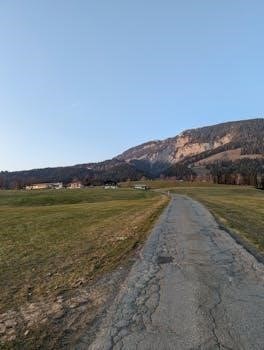Indus Valley Civilization Overview
The Indus Valley Civilization, flourishing from 3300-1300 BCE, was located along the Indus River valley. Its geographical extent covered parts of modern-day Pakistan and northwest India, making it one of the earliest urban cultures.
Timeline and Geographical Extent
The Indus Valley Civilization (IVC), also known as the Harappan Civilization, existed approximately from 3300 BCE to 1300 BCE. This places it among the world’s earliest urban civilizations, contemporaneous with ancient Egypt and Mesopotamia. The civilization’s geographical reach spanned across a vast area encompassing modern-day Pakistan and northwest India.
Specifically, it stretched from Balochistan in the west to Uttar Pradesh in the east, and from Afghanistan in the north to Gujarat in the south. The Indus River and its tributaries formed the lifeline of this civilization, facilitating agriculture, transportation, and trade. This extensive geographical footprint highlights the IVC’s significant influence and sophisticated organization across a diverse landscape.
Major Cities⁚ Harappa and Mohenjo-Daro
Harappa and Mohenjo-Daro stand as the most prominent urban centers of the Indus Valley Civilization. Mohenjo-Daro, notably discovered by Sir John Marshall, ranks as one of the five largest Harappan sites. These cities showcase advanced urban planning, with sophisticated infrastructure indicating a highly organized society.
Their well-structured layouts, standardized brick construction, and elaborate drainage systems reflect remarkable engineering skills. Archaeological findings from these sites provide invaluable insights into the daily lives, culture, and technological advancements of the Indus people. Harappa and Mohenjo-Daro exemplify the peak of urban development in the ancient Indus Valley, underlining the civilization’s significant contributions to early urbanism.
The Indus Valley Civilization showcased remarkable urban planning and architecture. Cities like Harappa and Mohenjo-Daro featured standardized bricks, advanced drainage systems, and well-laid-out streets, revealing a sophisticated and organized urban environment.
Standardized Bricks and Construction
The construction techniques of the Indus Valley Civilization were incredibly advanced for their time, particularly their use of standardized bricks. This standardization indicates a centralized authority overseeing construction and ensuring uniformity across different settlements. The bricks were typically made from baked clay, providing durability and consistency in building materials. The use of standardized bricks facilitated efficient construction processes, allowing for the rapid development of urban centers. The uniformity in brick size and shape contributed to the structural integrity and aesthetic appeal of the buildings, showcasing a high level of planning and engineering expertise. This methodical approach to construction reflects a sophisticated understanding of architectural principles and resource management within the Indus Valley Civilization.
Advanced Drainage Systems
One of the most remarkable features of the Indus Valley Civilization was its sophisticated drainage systems. These systems highlight a keen understanding of sanitation and urban planning. The drainage networks were meticulously designed to efficiently remove wastewater and prevent flooding, demonstrating advanced engineering capabilities. Each house was connected to the main drainage system, which ran beneath the streets. The drains were often covered with bricks or stone slabs, allowing for easy maintenance and preventing the spread of disease. The presence of such advanced drainage systems indicates a strong emphasis on public health and hygiene within the Indus Valley society. This infrastructure played a vital role in maintaining the cleanliness and habitability of the urban centers, contributing to the overall prosperity and longevity of the civilization;
Urban Planning and Architecture
Street Layout and Infrastructure
The street layout and infrastructure of Indus Valley cities like Harappa and Mohenjo-Daro showcase remarkable urban planning. Streets were laid out in a grid pattern, a testament to their advanced understanding of urban design. Main streets were wide and straight, while smaller lanes branched off, ensuring organized traffic flow. The presence of well-defined streets facilitated efficient movement of people and goods throughout the city. Complementing the street layout was a sophisticated infrastructure system, including wells for water supply and designated areas for waste disposal. This careful planning suggests a centralized authority responsible for managing urban development. The standardized street layout and integrated infrastructure contributed significantly to the functionality and livability of Indus Valley cities, reflecting a highly organized and prosperous society. The existence of such advanced urban planning highlights the civilization’s remarkable achievements.

Art and Craftsmanship
The Indus Valley Civilization, known for its sophisticated and urbanized society, produced remarkable art and craftsmanship. This included realistic stone and bronze sculptures, alongside intricate seals and inscriptions reflecting advanced artistic skills.
Stone and Bronze Sculptures
The art of the Indus Valley Civilization, particularly its stone and bronze sculptures, showcases a high degree of realism and technical skill. These sculptures offer valuable insights into the culture, beliefs, and daily life of the Harappan people. While examples are somewhat limited compared to other ancient civilizations, the existing pieces reveal a sophisticated understanding of human anatomy and artistic expression. The “Priest-King” sculpture from Mohenjo-daro, crafted from steatite, exemplifies the attention to detail and lifelike quality present in Indus Valley stone work. Furthermore, bronze figurines like the “Dancing Girl” demonstrate advanced metalworking techniques and a flair for capturing movement and form. These artifacts underscore the artistic prowess and cultural richness of this early urban society, offering a tangible connection to their world;
Seals and Inscriptions
The numerous seals discovered throughout the Indus Valley Civilization represent a crucial aspect of their material culture and administrative system. These seals, typically made of steatite, often feature meticulously carved animal figures, such as bulls, elephants, and rhinoceroses, alongside inscriptions in the undeciphered Indus script. The purpose of these seals remains a topic of ongoing scholarly debate, with theories suggesting they served as stamps for trade, identification markers, or even religious amulets. The inscriptions themselves are incredibly important, as they represent the best source of information about the Indus language. Researchers continue to study the seals, hoping to unlock the secrets of the Indus script and gain a deeper understanding of this enigmatic civilization’s social and economic structures. The Tamil Nadu government even announced a reward for decoding the ancient script.
Indus Script
The Indus script remains undeciphered, presenting a significant challenge to understanding the civilization. Despite numerous attempts, the meaning of the symbols found on seals and pottery remains elusive to researchers;
Undeciphered Nature of the Script
The Indus script stands as one of the most intriguing unsolved mysteries of the ancient world. Despite the discovery of numerous seals and artifacts bearing inscriptions, the script has resisted all attempts at decipherment. Unlike other ancient writing systems, such as hieroglyphics, the Indus script lacks a Rosetta Stone or bilingual text to provide a key for understanding its symbols and grammar.
Scholars have explored various approaches, including linguistic analysis and computational methods, but no definitive breakthrough has been achieved. The absence of easily identifiable proper names or repeated sequences has further complicated the task. This continues to fuel debate about the script’s nature.
Graffiti Marks and Potential Connections
Recent archaeological studies have revealed the presence of numerous graffiti marks at various Indus Valley sites. These marks, often found on pottery and other artifacts, bear a striking resemblance to symbols found in the Indus script. Researchers suggest that these graffiti marks may represent a simplified or abbreviated form of the script, used by common people for everyday communication or personal expression.
Notably, a Tamil Nadu archaeology department study identified over 90 ancient graffiti marks across 140 sites that mirror Indus Valley civilization symbols. This discovery has sparked speculation about potential connections between the Indus Valley civilization and later cultures in South India, raising intriguing questions about cultural transmission and linguistic continuity.
The decline of the Indus Valley Civilization is attributed to various theories. These theories attempt to explain the civilization’s end and its connection to later historical developments in the region.

Decline of the Civilization
Theories on the Causes of Decline
Several theories attempt to explain the Indus Valley Civilization’s decline, which occurred around 1800 BCE. These include environmental factors such as climate change, specifically drought and changes in the river’s course. Some theories propose invasions or migrations of new populations, while others suggest internal factors like overexploitation of resources or societal collapse. The Harappan Civilization possibly declined due to Aryan attacks. These attacks led to the displacement of the Harappan people. It remains a topic of ongoing research to fully understand the complex interplay of factors leading to the civilization’s transformation and eventual decline and abandonment of major urban centers.

Archaeological Discoveries and Research
Archaeological discoveries continue to shape our understanding of the Indus Valley Civilization. Madho Sarup Vats made pioneering contributions through his work at Harappa and Mohenjo-daro, revealing key aspects of this ancient society.
Contributions of Archaeologists like Madho Sarup Vats
Madho Sarup Vats, an influential Indian archaeologist (1896-1955), is celebrated for his groundbreaking work on the Indus Valley Civilization, particularly at the significant sites of Harappa and Mohenjo-daro. His research provided crucial insights into the urban planning, architecture, and material culture of this ancient civilization. Vats’ meticulous excavations and detailed documentation significantly advanced our understanding of the Indus Valley people’s way of life. His contributions remain invaluable to scholars studying this early urban society, shedding light on its unique characteristics and its place in ancient history. His work continues to inspire further research and analysis of the Indus Valley Civilization.
Ongoing Research and Analysis
Ongoing research and analysis of the Indus Valley Civilization continues to unveil new facets of this ancient society. Scholars are employing advanced technologies and interdisciplinary approaches to decipher the Indus script, analyze artifacts, and reconstruct the civilization’s social and economic systems. Recent studies focus on understanding the civilization’s decline, its connections to later historical developments, and its influence on subsequent cultures. Archaeological discoveries, coupled with scientific analysis, are constantly refining our knowledge of the Indus Valley people, their innovations, and their place in the broader context of early urban cultures. This continued exploration promises to reveal even more about this fascinating civilization.

Legacy and Significance
The Indus Valley Civilization’s legacy includes its influence on later historical developments and its importance in understanding early urban cultures. Its planned cities and innovative technologies left a lasting impact.
Influence on Later Historical Developments
The Harappan Civilization, also known as the Indus Valley Civilization, has connections to later historical developments, though the exact nature and extent are still debated. The civilization’s decline and its potential link to later cultures remain areas of ongoing research. Examining the civilization’s urban planning, trade networks, and societal structures provides insights into the trajectory of South Asian history. Discovering the reasons for its decline could unlock clues about societal resilience and adaptation, influencing modern approaches to urban sustainability and cultural preservation. Furthermore, its deciphered Indus script could potentially reveal more about the civilization’s impact on subsequent societies.
Importance in Understanding Early Urban Cultures
The Indus Valley Civilization offers crucial insights into the nature of early urban cultures. As one of the world’s earliest urban civilizations, its study is essential for understanding the development of complex societies. Major cities like Harappa and Mohenjo-Daro show advanced urban planning. They show standardized bricks, streets, and drainage systems. Analyzing the Indus Valley Civilization’s social, economic, and technological advancements provides a comparative framework. It helps us understand other ancient urban centers around the world. The Indus Valley Civilization provides valuable lessons about sustainable urban development and societal organization. It offers insights into the challenges and opportunities faced by early urban populations.